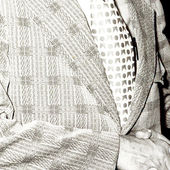
FRANK RUBIE AND PHOTOS FOR THE NEWS
Tillsonburg’s early newspapers did not have the quantity of pictures that we have in the papers today. The Tillsonburg News relied heavily on the London Free Press for images.
In the 1950s, that changed in Tillsonburg! Frank Rubie, who was working as a jeweller in town, had to give up his career because his eyesight was not sufficient for the detailed work required in the jewellery trade. Jack (J.F.) Weston, a mechanical engineer and Ontario Land Surveyor, offered Frank a job as a draftsman. J. F. had built a darkroom in the basement of his house, the same house that contained his drafting office, and Frank became interested in photography while working there.
Frank stopped working for J. F. but they, and their families, remained friends. Frank had a key to the dark room and if J. F.’s kids heard someone coming in, they knew it was Frank! Frank started to work for The Tillsonburg News , as a photographer, and would use the copy camera to make full-sized negatives which were used to burn plates for the offset printing press.
Eventually, a dark room was built at the Tillsonburg News Office at the corner of Broadway and Brock and photo production could be done onsite.
COPY CAMERA
Text written by Joan Weston
J.F. Weston designed and built this Copy Camera in the 1950s. The camera allows you to create a negative from an original photograph. This negative is then used to create a photographic plate which is used to print photos in a newspaper. The original image is put on a bed below the lens and the bellows. There are different-sized boxes for different-sized negatives. You need bright lights above the image on both sides, these bright lights help to bounce the image up through the camera lens, which then exposes the image and creates a negative. You need to use a magnifying glass to focus the image and in order to do that you have to stand on something so you can look down from above. A piece of fogged glass, placed on the top of the negative box, allows you to make sure your image is in focus. There are crank wheels which you turn for focusing above and below the box. When the image is in focus, the bright lights are turned off and a photographic red safety light is turned on. Once the safety light is on, the piece of fogged glass is removed and an unexposed photographic negative is put in its place. The top is closed and the exposure lights turned back on for the required time. The resulting full-sized negative is used to burn a photographic plate for an offset printing press.

Offset Plates from the Museum's Collection
These are a few examples of the many offset plates that belonged to The Tillsonburg News.
The plates were donated to the museum in 2017 by Walter Kleer.

























